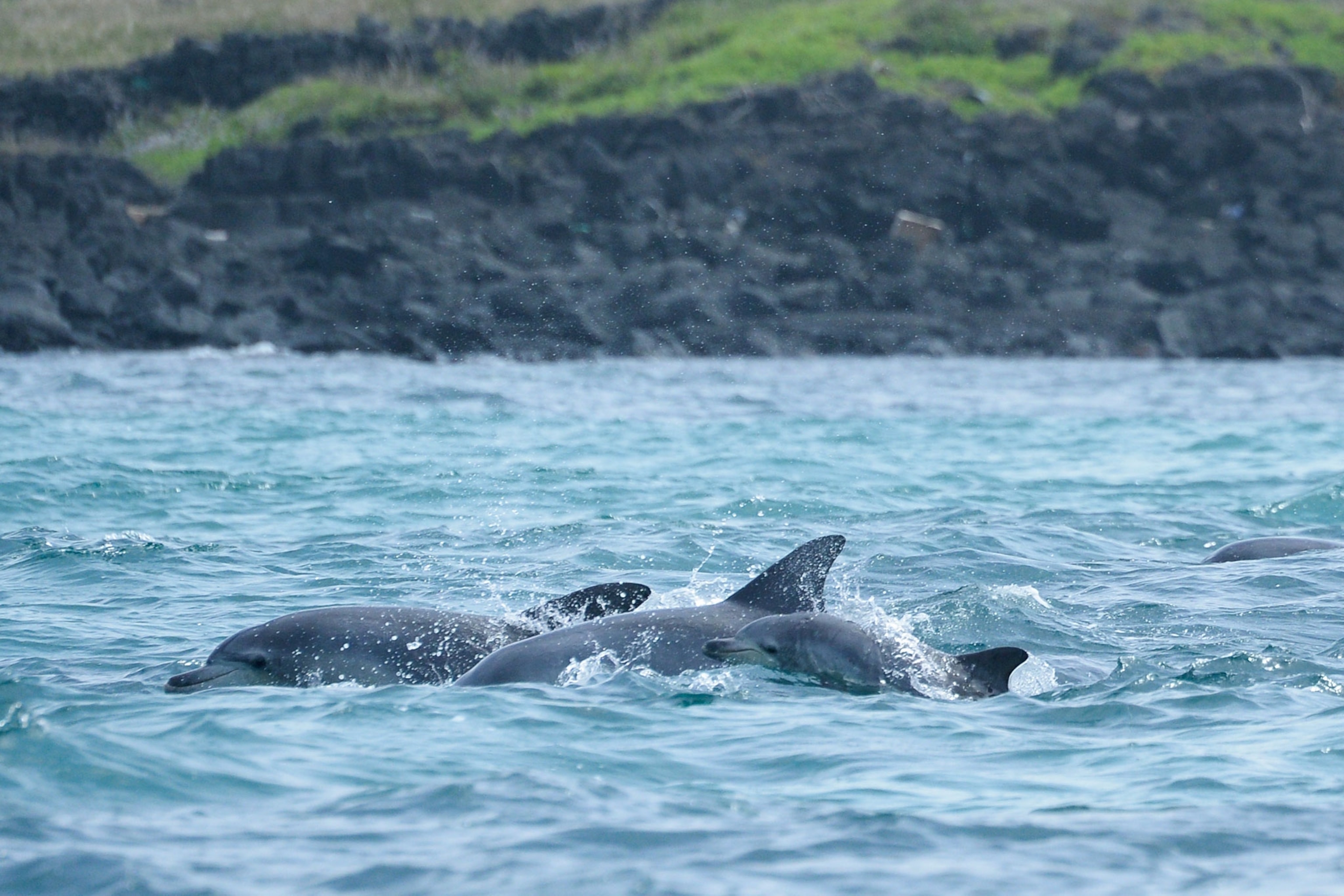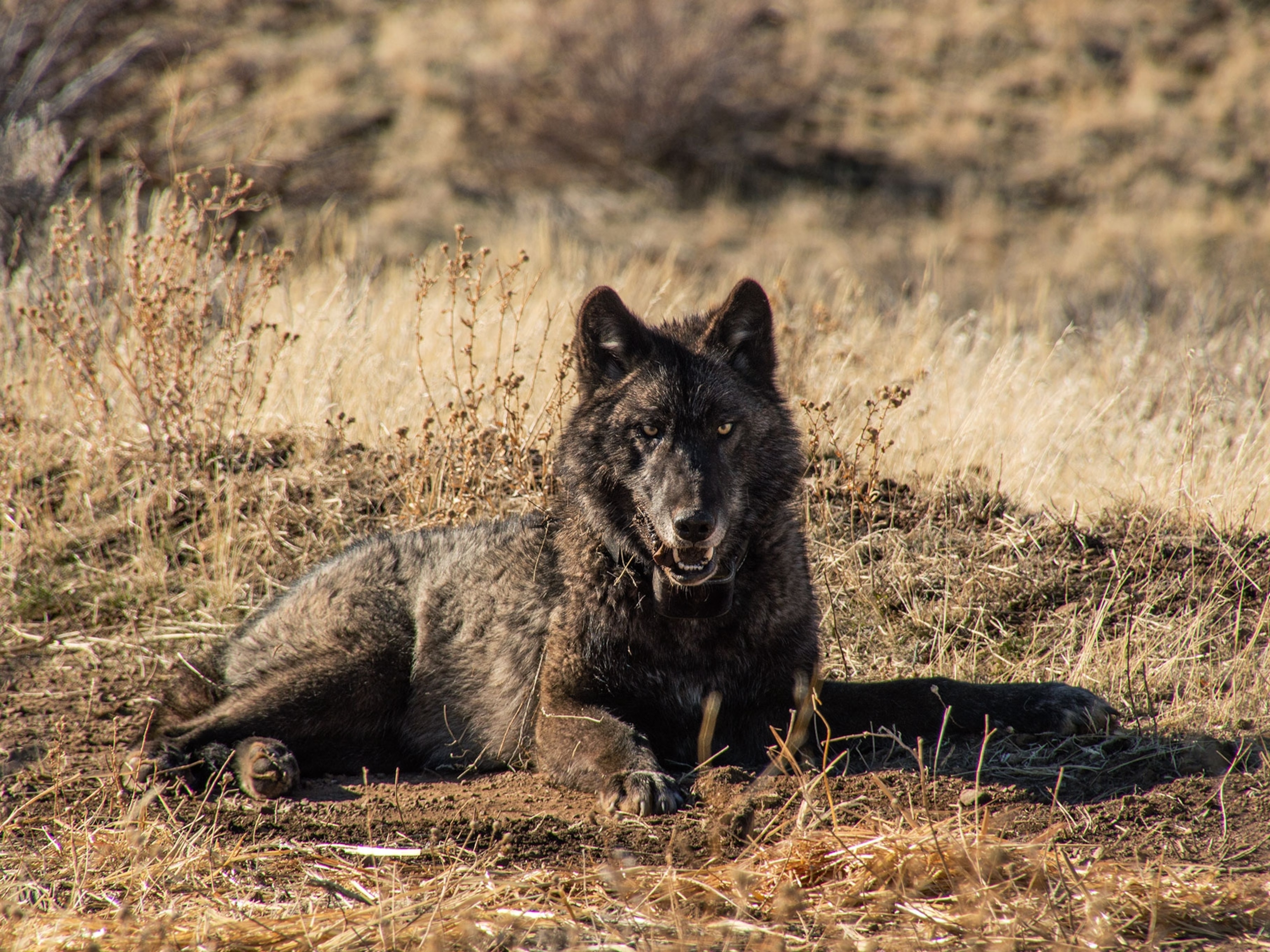
Freed Aquarium Dolphin Spotted With Baby in the Wild
Sampal's calf, seen in the waters off Jeju, South Korea, suggests reintroduced dolphins can go on to lead healthy lives, experts say.
On a recent March day, researcher Mi Yeon Kim was watching a pod of about 55 dolphins off the South Korean island of Jeju (map) when she noticed a female dolphin with a small calf.
This wasn't just any calf, nor was its mother just any dolphin.
The mother's markings and fins confirmed to Kim and her colleague Soojin Jang that the female is a formerly captive Indo-Pacific dolphin called Sampal, which was released back into the wild in June 2013, along with two others.
The female, believed to be between 13 and 15 years old, had spent four years at the Jungman Pacific Land Marine Park in Jeju. She was also featured in a National Geographic magazine story about whether it's possible to successfully release captive dolphins.
"We now have a solid example of not only a successful release of a dolphin back into the wild to her pod, but the successful birth of her offspring after years in captivity," says Denise Herzing, research director and founder of the Wild Dolphin Project, a nonprofit based in Jupiter, Florida.
It suggests "we can release good candidates to their families with a chance not only of survival, but of a healthy re-adaptation to a full social life, including creating the next generation of wild dolphins," Herzing, who was not involved in the Jeju release, says in an email. (Related: "Can Captive Dolphins Return to the Wild?")
Though it's generally difficult to track released captive dolphins over the long term, Jeju's dolphins tend to live in an easily identifiable pod in coastal waters.
This accessibility has given Kim, of Jeju National University, and Jang, of Ewha Womans University, the first extended opportunity to examine what formerly captive dolphins do in the wild.
And now, Sampal has provided them with reason for hope.
Back to the Wild
Between 1990 and 2011, Pacific Land, one of three aquariums with dolphins on Jeju, illegally captured 26 dolphins, according to the Korea Animal Welfare Association, which campaigned against the dolphins' captivity. In 2013 South Korea's Supreme Court ordered the release of Sampal and four others (most of the rest had died).
To prepare Sampal and two of the other dolphins, Chunsam and Jedol, for their 2013 release, marine park authorities reintroduced the mammals to eating live fish and exercised them to improve their fitness.
Two more Indo-Pacific dolphins, Tasean and Boksoon, which had been deemed too ill in 2013, were released in 2015. (See photos of captive dolphins in National Geographic magazine.)
According to Jang, who's been watching the dolphins as part of research study by South Korea’s Jeju and Ewha Universities, all five animals found their way back to Jeju's wild pod, from which they had been captured, within weeks of release.
Smooth Transition
To Jang, the five now seem like all the other wild dolphins: “They are observed in different groups, hunting, synchronized swimming, surfing, and doing other behaviors [like trying to mate]," she says by email.
"Their movement in speed, sociality, and hunting does not seem to [be lacking]. They are able to keep up with the wild individuals in all the behaviors that are being observed.”
For instance, Jedol, who's estimated to be about 15, is usually seen with a group of breeding males. Chunsam, another female who is thought to be a few years older than Sampal, is often seen in the vicinity of Sampal, continuing a connection that was established in captivity. (See a graphic of captive dolphins worldwide.)
In contrast, Taesan, a male that's around 21, and Boksoon, estimated to be 18, who were so tightly bonded in captivity that they exhibited visible stress when separated, appear to have gone their separate ways, integrating into different subgroups of the Jeju pod.
After the March sighting of Sampal, “we kept a close monitor on [her] throughout the next four weeks. When we found her, she was always with a small calf about a meter in size in the mother-calf position," Jang adds.
Jang estimates that the calf is three to six months old, based on its appearance, and the fact that Sampal was seen alone, without a calf, last November.
Intelligent Animals
One reason the dolphins have thrived is because they returned to their native pod, which is thought to be "a perfect setup," says Ric O’Barry, founder and director of the California-based Dolphin Project, who consulted on the Jeju reintroduction.
Jang mostly credits the intelligence and adaptability of the dolphins themselves.
“They did well adjusting in the wild again, nothing more,” she notes.
“There were only a few things that humans could help with in the process, and there are so many things that could not be taught. Even with bare minimum training, all five individuals are doing great.”
Tim Zimmermann, who writes about marine mammals and captivity, was an associate producer and co-writer of the documentary Blackfish. Follow him on Twitter and Facebook.





